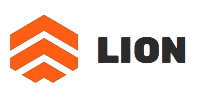رسم الخرائط القياسية الدولية
مقارنة معادلة شاملة
| دولة | الرمز القياسي | تعيين سبيكة | تشابه التكوين | تطابق الأداء | التطبيقات الأولية |
|---|---|---|---|---|---|
| الولايات المتحدة الأمريكية | الولايات المتحدة C93700 | قاد القصدير البرونز | 100% | المعيار المرجعي | المحامل الشاقة |
| D3 الصلب للأعمال الباردة لديه مقاومة تآكل عالية جدًا ضد التآكل الكاشطة والمواد اللاصقة بسبب الحجم الكبير للكربيدات الصلبة في مصفوفة الصلب | DIN CUSN10PB | قاد القصدير البرونز | 95 ٪ | عالي | الآلات الصناعية |
| D3 الصلب للأعمال الباردة لديه مقاومة تآكل عالية جدًا ضد التآكل الكاشطة والمواد اللاصقة بسبب الحجم الكبير للكربيدات الصلبة في مصفوفة الصلب | BS 1400 | PB1 | 93 ٪ | جوهري | الهندسة الدقيقة |
| D3 الصلب للأعمال الباردة لديه مقاومة تآكل عالية جدًا ضد التآكل الكاشطة والمواد اللاصقة بسبب الحجم الكبير للكربيدات الصلبة في مصفوفة الصلب | انه H5120 | CA405 | 90 ٪ | جيد | المكونات البحرية |
| D3 الصلب للأعمال الباردة لديه مقاومة تآكل عالية جدًا ضد التآكل الكاشطة والمواد اللاصقة بسبب الحجم الكبير للكربيدات الصلبة في مصفوفة الصلب | GB/T 5231 | QSN10-1 | 88 ٪ | مماثلة | مكونات السيارات |
انهيار التكوين الكيميائي
نطاق التكوين النموذجي (٪)
- النحاس: 85.0 - 89.0
- القصدير: 9.5 - 11.5
- الرصاص: 1.0 - 2.0
- الزنك: 0.25 كحد أقصى
- الفسفور: 0.01 - 0.35
مقارنة خصائص الأداء
تحليل الخصائص الميكانيكية
- إلى 500 درجة مئوية وتخفيف التوتر
- C93700: 450-500 ميجا باسكال
- سبائك مكافئة: 430-490 ميجا باسكال
- قوة الغلة
- C93700: 250-320 ميجا باسكال
- سبائك مكافئة: 230-310 ميجا باسكال
- استطالة
- C93700: 18-25%
- سبائك مكافئة: 15-22 ٪
مزايا الأداء الرئيسية
الخصائص المميزة
- خصائص استثنائية لمكافحة الاحتكاك
- قدرة الحمل عالية الحمل
- مقاومة ارتداء متفوقة
- قابلية ممتازة
- قوة التعب الجيدة
مجالات التطبيق الأمثل
سيناريوهات الاستخدام الموصى بها
- المحامل الشاقة
- مكونات السيارات
- الهندسة البحرية
- الأنظمة الهيدروليكية
- التجميعات الميكانيكية الدقيقة
اعتبارات الاختيار
عوامل التقييم النقدي
- متطلبات الحمل الميكانيكية
- نطاق درجة حرارة التشغيل
- ظروف التشحيم
- بيئة التآكل
- القيود الاقتصادية
قيود الأداء
تحديات الاستبدال المحتملة
- اختلافات الموصلية الحرارية
- الاختلافات المجهرية
- متطلبات تزييت محددة
- اتساق الأداء
المنظور الاقتصادي
مقارنة التكلفة (نسبة إلى C93700)
- DIN CUSN10PB: -2 ٪ إلى +3 ٪
- BS PB1: 0 ٪ إلى +4 ٪
- JIS CAC405: -3 ٪ إلى +2 ٪
- GB QSN10-1: -5 ٪ إلى 0 ٪
الاتجاهات التكنولوجية الناشئة
اتجاهات التنمية المستقبلية
- هندسة السطح المتقدمة
- سبائك برونزية منظمة نانو
- تحسن تقنيات التصنيع
- تعزيز الطلاء المقاومة للارتداء
توصية استراتيجية
يتطلب اختيار ما يعادل C93700 المناسبة فهمًا دقيقًا لمتطلبات الهندسة المحددة والظروف البيئية ومقاييس الأداء.
نصيحة نقدية: إجراء اختبار شامل واستشارة خبراء المعادن قبل اختيار المواد النهائية.
رؤى مهنية
منظور خبير الصناعة
يمثل C93700 برونز القصدير متعدد الاستخدامات مع أداء استثنائي عبر مجالات هندسية متعددة. يوفر تكوينه الفريد مقاربة متوازنة للتحديات الميكانيكية في التطبيقات عالية الإجهاد.
